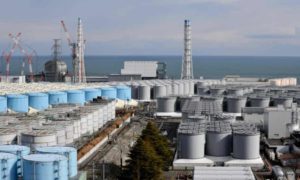
Context
Once begun, the water disposal will take decades to complete, with a rolling filtering and dilution process, alongside the planned decommissioning of the plant.
Why in news?
Japan plans to release into the sea more than a million tonnes of radioactive water from the destroyed Fukushima nuclear station.
Detailed Analysis
- Tepco has been struggling with the build-up of contaminated water since bringing three reactors under control after a 2011 earthquake and tsunami knocked out electricity and cooling.
- The company has been using a makeshift system of pumps and piping to inject water into damaged reactor vessels to keep melted uranium fuel rods cool.
- The water is contaminated as it comes in contact with the fuel before leaking into damaged basements and tunnels, where it mixes with groundwater that flows through the site from hills above.
- The combination results in excess contaminated water that is pumped out and treated before being stored in huge tanks crowding the site.
- Those tanks now hold about 1.3 million tonnes of radioactive water, enough for about 500 Olympic-sized swimming pools.
- Efforts to tackle the problem have included building an “ice wall” around the damaged reactors and wells to draw groundwater away before it reaches the reactors.
- These measures have slowed, but not halted, the buildup of contaminated water.
- Over the years, Tepco has also battled leaks, spills, malfunctioning equipment and safety breaches, hindering cleanup efforts expected to run for decades.
- In 2018, Tepco admitted it had not filtered all dangerous materials out of the water, despite saying for years they had been removed.

